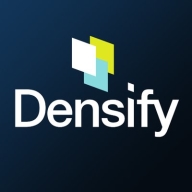

Nasuni and Densify compete in the cloud space, with Nasuni focusing on cloud file storage and Densify on cloud optimization. Nasuni tends to lead in cost-effectiveness and comprehensive support, while Densify is preferred for its robust optimization features, making it valuable for organizations aiming for efficiency.
Features: Nasuni offers seamless cloud storage integration, scalable file storage, and efficient data access. Densify excels in strong analytics, cloud resource optimization, and cost management.
Room for Improvement: Nasuni could improve with better user access for data recovery and enhanced security protocols for data handling. Additionally, further reduction in snapshot storage costs could be advantageous. Densify might benefit from simplifying its deployment process, enhancing its user interface, and offering more flexible pricing plans.
Ease of Deployment and Customer Service: Nasuni is known for its straightforward deployment and responsive customer support, facilitating easier business implementation. Densify, while powerful, requires a more complex deployment process, though it is supported by a practical and effective customer support system.
Pricing and ROI: Nasuni is recognized for competitive pricing and offers strong ROI with lower startup costs. Densify, although initially pricier, delivers significant ROI by optimizing cloud expenditures and resource management.
| Product | Market Share (%) |
|---|---|
| Nasuni | 8.8% |
| Densify | 1.6% |
| Other | 89.6% |


| Company Size | Count |
|---|---|
| Small Business | 1 |
| Midsize Enterprise | 1 |
| Large Enterprise | 9 |
| Company Size | Count |
|---|---|
| Small Business | 3 |
| Midsize Enterprise | 8 |
| Large Enterprise | 24 |
Densify is a hybrid cloud and container resource management platform that makes workloads self-aware of their precise resource requirements and automates the resource management and selection process. This solution helps you control your cloud spend and also helps your apps perform and scale better. Densify enables you to match your cloud requirements with the optimal cloud supply. Additionally, Densify is the only technology that leverages patented, predictive machine learning-powered analytics to perform advanced modeling of workload patterns, and provide precise optimization directives. It is ideal for cloud engineers, container platform owners, and IT finance.
Densify works by:
Densify Features
Densify has many valuable key features. Some of the most useful ones include:
Densify Benefits
There are many benefits to implementing Densify. Some of the biggest advantages the solution offers include:
Nasuni is a file data services enterprise focused on assisting firms with their digital transformation, global expansion, and information awareness. The Nasuni File Data Platform is a suite of cloud-based services designed to enhance user productivity, ensure business continuity, provide data intelligence, offer cloud options, and simplify global infrastructure. This platform and its auxiliary services are projected to replace conventional file infrastructure such as network attached storage (NAS), backup, and Disaster Recovery (DR), with an expandable cloud-scale solution. By storing file data in scalable cloud object storage from multiple providers, Nasuni positions itself as a cloud-native alternative for traditional NAS and file server infrastructure. Based in Boston, Massachusetts, USA, Nasuni serves sectors like manufacturing, construction, technology, oil and gas, financial services, and public sector worldwide, offering its services in more than 70 countries.
James J., IT Manager at a marketing services firm, says Nasuni’s management dashboard is helpful because he's able to view all of the different filers at once rather than check each one of them individually. He values the software’s security, reliability, good performance, helpful alerting, and responsive support.
According to a Server Engineering Services Lead at a mining and metals company, Nasuni offers good OR and DR capabilities, performs well, offers data security, and continuous file versioning helps recover from hardware failures.
The Managing Director of IT at a construction company appreciates Nasuni because it eliminates a lot of work that was previously done when managing backing up and restoring data files.
We monitor all Cloud Migration reviews to prevent fraudulent reviews and keep review quality high. We do not post reviews by company employees or direct competitors. We validate each review for authenticity via cross-reference with LinkedIn, and personal follow-up with the reviewer when necessary.